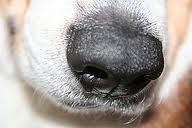 Runny nose (rhinitis) in cats and dogs can be a separate disease or a symptom of other diseases. Nasal discharge may be watery, mucous, purulent. If the selection goes from one nostril, then it’s probably not a simple head cold, it often indicates a tumor in the nasal passages, this doctor’s consultation is required.
Runny nose (rhinitis) in cats and dogs can be a separate disease or a symptom of other diseases. Nasal discharge may be watery, mucous, purulent. If the selection goes from one nostril, then it’s probably not a simple head cold, it often indicates a tumor in the nasal passages, this doctor’s consultation is required.
Common cold usually occurs without worsening of general condition, the animal is active, eats well. For the treatment can be used to drop the animals or small children in the oil-based. Treatment is carried out at least 7 – 10 days.
It should be noted that even the common cold in cats, dogs runny nose, if left untreated, may become chronic. Chronic rhinitis is almost impossible to treat. Therefore, it is expedient to immediately contact your veterinarian.
Do not be afraid to treat with antibiotics if the case is not running, you will have a healthy animal. But as a rule, the animal gets to a vet suffering from is 1.5 – 2 months! Often the treatment is useless, and the owners charged with veterinarians in mediocrity. By purchasing a kitten or a puppy at the age of 1.5 – 2 months, sneezing, but fun, the owners think that it is “cold” and are surprised that in a month or two “cold” does not pass. And when you consider that viral rhinotracheitis or kalitseviroz cats, adenovirus, and the plague in dogs begins, usually with a cold – can be within 5 – 10 days of losing an animal. For the young, these viruses are deadly. Runny nose may be allergic origin, the first sign of asthma (not uncommon in cats!). This treatment is different: antihistamines, corticosteroids.
Particular caution – self-medication may be harmful to your animals, so we do not give specific assignments to the medical examination.
GENTLE CAT HOC
In profile, the cats of different breeds differ significantly from each other. Elongated and straight nose oriental cats can be as much as 5 inches longer spout Persian, resembling a small button of. But no matter how the nose looked like it throughout their lives is a true cat, as an important sensory organ and the beginning of the respiratory system. Inhaled air before it enters the lungs and clears heat in the nose. In addition to the vital oxygen, the cat may inhale harmful bacteria and viruses, as well as various foreign bodies. Fortunately, the cat’s nose is an excellent biological filter, which does not pass into the body, most microbes. Micro-organisms and dust deposited on the mucous membrane, and then allocated through the nose. So sometimes in the nose prominent black cats are thin crust, from which the animal gets rid of when washing. These secretions, breathing, are not a sign of disease. A cat can inhale foreign bodies: a blade of grass, string, small fish bone, and even insects. Then she starts to sneeze and constantly rubs his nose with his paw. In most cases the foreign body out of itself. Otherwise, do not try to remove it (you can seriously injure the nasal mucosa), and you must immediately give the cat the care of a veterinarian.
If the cat runs from the nose, she sneezes and breathes with difficulty, the poor are likely to seriously ill. It is through the nose in the animal pathogens penetrate the most dangerous and incurable diseases – infectious peritonitis (FIP) and leukemia (FeLV). Protect your cat from these deadly diseases can only be timely vaccinations. Some infectious diseases of the upper respiratory tract are united under the name “cat’s runny nose.” Their agents – herpes viruses, reoviruses, kalitsevirusy, Chlamydia. Symptoms of feline rhinitis – sneezing, coughing, eye inflammation, fever, weakness and apathy. Discharge from the eyes and nose, watery at first, and then the adhesive or purulent. Often an animal cannot breathe through your nose. Because of the deteriorating appetite, because the cat does not feel the smell of food. Kalitsevirus, except for the described symptoms, may cause ulceration of the mucous membranes of the mouth. Various animals endure a cold cat in many ways: some off with a slight indisposition, other disease is very difficult. Of course, one should not expect deterioration, hoping for a home remedy. At the first sign of illness, especially when the temperature rises, you need to consult a doctor. Cat’s cold can be cured with antibiotics and anti-inflammatory drugs, but it is better to make the cat vaccinated. Running respiratory infections can lead to inflammation of the lungs. Against the background of feline rhinitis may develop a secondary bacterial infection – inflammation of the maxillary (nose) sinuses. In this case a cat sneezes, spraying white, yellowish, often with blood, a secret. Appetite remains normal animal, because breathing is difficult, the selection comes from the sinuses. Sinusitis treated with antibiotics, in severe cases, the nasal cavity is washed, exposing them to the outside. Cats often suffer from colds in the nasal passages may be formed polyps – benign growths the size of a cherry. Symptoms of polyps: difficulty breathing, nasal discharge, recurrent bouts of sneezing. Some cats shake their heads, can change the timbre of voice and swallowing difficult. Get rid of the polyps can only be surgically.Some cats may suffer from allergic rhinitis. Animal allergies and sneezes, as opposed to the common cold, caused by colds, nasal discharge is always watery. Cats, like humans, there is an allergic reaction to pollen of certain plants or chemicals. Measures to prevent allergies – to identify the allergen and prevent their falling into the habitat of the cat. Relieve allergic rhinitis by using anti-inflammatory drugs.
Thus, the respiratory diseases of cats on the symptoms and treatments are similar to those of men. Under no circumstances do not try to treat cough and sneeze cat antibiotics, which, for example, quickly helped to catch a cold last winter baby. Only a veterinarian may prescribe an effective cure for a cat in a suitable dosage for a particular animal. The best way to protect your cat against disease – timely vaccination. Combined vaccination against pathogens “cat colds”, and chlamydia.
The first vaccination – at the age of 8-9 weeks. Booster – at the age of 11-12 weeks. Subsequent re-vaccination – every year. Cat’s nose is not only an important part of the respiratory system, but also the organ of smell. Cat has a great sense of smell is much more acute than in man. Department of cat brain responsible for sense of smell is well developed. In addition, over the upper jaw of a cat is a special organ that does not pertain to the nose – the body Jacobson. Its role is to recognize odors. This body is in other animals, such as horses. The cat sometimes opens his mouth, sniffing the unfamiliar objects. So the cat “sniffing” Jacobson organ. It is noticed that, as a rule, unpleasant for the person smells like urine scent marks, the cat with the body recognizes Jacobson. The food is usually a cat sniffing nose. But not exactly clear what makes a cat in some cases the use of Jacobson organ, while others – the nose.
It is believed that a dog’s nose is sharper than a cat. In fact, this is not true. Indeed, part of the brain dog responsible for the sense of smell, developed more than a cat. But the smells of food, as well as relatives of the cat trap smells just as sharply as a dog. The main difference in the smell of cats and dogs is that dogs are on the trail, the cat did not. However, cats can smell from a distance. During the mating period, females gather at the window all the neighboring cats. Some go to the “scent of a woman” from afar. Cat owners need to know about one of their features. Before you eat, the cat always sniffs the food, even the well-known and beloved: the smell of food stimulates the appetite. The cat, which has a stuffy nose, turns away from the tidbits. At a cold cat for some unknown reason does not use body Jacobson. Diseased animal is fasting harmful to itself – the body is not getting food, weakens, and the disease progresses. Therefore, a cat suffering from even a slight cold, to clean the nose and feed it highly palatable foods: liver, the most favorite canned food, fresh meat. Some odors are a cat like a drug. For example, sniffing, or valeric tincture of valerian root, most cats will come into ecstasy: starts rolling on the floor and rub on all sorts of things. This lasts a few minutes. In addition to valerian, cat smells like catnip, onion and garlic. Odor as naphthalene and orange cats are extremely unpleasant.
How to care for the dogs nose?
Dog’s nose – the main feature of the health problems. Therefore, if the nose is not wet and cold, like a healthy dog, it should alert you. Dry, hot, and sometimes cracked nose should alert the owner – a symptom of illness onset. However, warm nose can be a dog during a game or immediately after sleep. Still, be observant, in time to capture the best condition. If the dog has returned home with his nose, covered with clay, earth, remove the dirt moist, soft cloth.
Sometimes dogs and cold as a consequence of the elementary hypothermia, inhalation of irritating. Nasal passages of dogs are very narrow, they are many folds, so effective medication in the form of aerosol, but aerosols are unpleasant for the dogs, so it’s best to use and children from the cold drops of liquid oil.
Avoid the use of dogs for the treatment of nasal vasoconstrictor agents such as “Sanorin”, “Naphazoline.” This is very dangerous. Thick, greenish nasal discharge, accompanied by the formation of thick crusts and coarsening of the skin nasal mirror, often an indicator of the disease plague. Especially if this observed greenish purulent discharge from the eyes. It is clear that a doctor is needed here. The resulting “brown” can be deleted, their pre-softened mineral oil or glycerin. And the secret of the nasal passages is removed with a tightly twisted wool from the flagella, and moisten them with petroleum jelly or glycerin.
Archive | April 2012
Children, Dogs and All of Us …
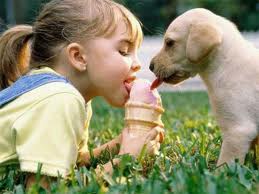 Gets a dog for the children out of every five of those who gets it. And, of course, rightly so, because the dog – this is a friend and nurse, and the uncle and his younger brother, and sometimes stern headmaster. And it would seem, no problems, but 18% of dog owners admit that their dogs growl and sometimes bite the younger family members. Therefore, when the adults want to grow in the garden of one and the children, and dogs, they must find the answers to the questions: What four-legged breed should start in such a case, and when?
Gets a dog for the children out of every five of those who gets it. And, of course, rightly so, because the dog – this is a friend and nurse, and the uncle and his younger brother, and sometimes stern headmaster. And it would seem, no problems, but 18% of dog owners admit that their dogs growl and sometimes bite the younger family members. Therefore, when the adults want to grow in the garden of one and the children, and dogs, they must find the answers to the questions: What four-legged breed should start in such a case, and when?
I would not want to impose their views, especially since it is based on experience rather limited – lots of dogs, and lives alone. And among my friends are the family where English Cocker keeps all in awe and humility, and the family in which the Moscow guard – well, just a mother, a nurse on four legs. And advise here! So the experience of one person may be enough. But there is a social experience – the experience of each of us, neatly folded. Use it is very tempting.
It is believed that the dog is better start when your child is more than a year, provided that, if you both are going to educate themselves. If you want a dog involved in a child, wait until he turns fourteen. There are exceptions, but rely on them should not be. When the dog and children is particularly important Dog Training experience of adults, and if the dog previously you did not have, try to fill at least theoretically the problem of knowledge. Oh, and as it may seem strange, but my grandmother and grandfather – bad aides in growing dogs: they pamper them like grandchildren.
As for the choice of breed, then I suggest to everyone to take advantage of the most social experience and not to fill shishey dog on the rocks, which have already stumbled on the other. To do this, I asked for 230 with or without, but living next to the dogs Muscovites to answer two questions: “The most-the most the breed for a family with a child?” and “most-the most the breed for the education of a teenager?”. Of course, the most frequently mentioned the most common species, known to most respondents.
According to the survey found that of the 27 breeds that are recommended for bringing up a teenager in the top ten included the German and East European Shepherd, Airedale, Collie, Giant Schnauzer, Boxer, Schnauzer, Doberman, Flushing, and mongrel dogs. Less commonly recommended Dalmatian, Rottweiler, Newfoundland, poodles, dachshunds, and setters. Of those who offered to families with children, adolescents are not considered suitable Afghan Hound, Bernese Shepherd, Bloodhound, Kerry Blue Terrier, Pekingese, Scottish Terrier, French Bulldog lap dog, Irish wolfhound, a Chihuahua, white terrier, bull terrier, pug , miniature schnauzer, chow-chow, Moscow watchdog, bobtail, and St. Bernard.
I am glad that public opinion was demanding the choice of breed for teenagers. In fact, if an adult will lead the wrong dog, it can be dangerous, most likely, only for members of his family, and if not that the dog will bring out a teenager, it can hurt many people. And if public opinion offers a choice of 27 teenagers “food”, for the content in a family with a child allows 42 species, believing that there are no bad dogs.
With the proper education of an adult, a dog of almost any breed can get along very well in a family with a child. But anyway, the top ten breeds in this case are (in descending order of urgency guidelines) collie, St. Bernard, Newfoundland, spaniels, German shepherd, poodles, Schnauzers, Giant Schnauzer, Boxer and Airedale. Less often, but too often, it is advised bobtail, Labrador dog, dachshund, Moscow watchdog, Chows, Miniature Schnauzer, Rottweiler, Pug, Bull Terrier, and setters. Not excluded the mixing of children with sheltie, black terrier, Chihuahua, Central Asian Shepherd, Irish wolfhound, a mongrel, Alsatian, lapdogs, Bassett, French Bulldog, Whippets, Scottish terrier, Pekingese, Irish Terrier, Doberman, Bloodhound, Shepherd Berne and Afghan greyhound.
However, were never mentioned in the answers to both questions is the English Bulldog, Greyhound, Miniature Pinscher, Greyhound, Mastiff, and bullets, Russian Hound, Toy Terrier, and Japanese Chin. And most “childish” breeds of dogs were collies, German shepherd, Airedale and East European Shepherd, more often mentioned in the responses to both questions.
Diseases of Pigs.
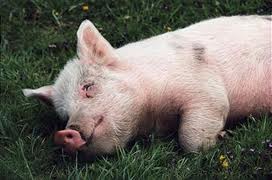 All diseases of pigs mainly occur in the warm season – late spring and summer. Most other pigs exposed to the disease erysipelas, or rubella, which mainly captures the pigs aged 4 to 12 months.
All diseases of pigs mainly occur in the warm season – late spring and summer. Most other pigs exposed to the disease erysipelas, or rubella, which mainly captures the pigs aged 4 to 12 months.
Infection faces has the ability to persist very long time in the stalls, or pastures eaten by pigs rubella patients. She persists in box, which had been fertilized with manure of infected animals, and especially – in places where the corpses of the fallen were buried pigs.
Infection caught in the animal’s body produces its destructive effect immediately, is 3 – b, sometimes seven days before starting to show signs of disease. However, the disease, according to latency appears very rapidly. Swine suddenly become very restless: grunt, angrily rushing to stall, it is no longer there. Then they try to be somewhere in a cool dark place, burrow into the straw, where he lay motionless. They have a vomiting eyelids swell greatly, from my eyes flow with tears. After a while the diarrhea begins, at what discharge are extremely smelly and often with blood, and in the meantime on the skin (mainly – on the head, ears, belly) are red spots that become darker, so that white pigs have the same form if they were doused with Burakov kvas. The disease lasts sometimes 2-3, sometimes 3-4 days in most cases ends in death cases. In some cases, the face is a protracted form of the animals are sluggish, take a little food, lose weight, often lie on the chest, coughing. Recovery occurs rarely, in most cases, patients are gradually depleted, and falling. Sometimes this is added to all parts of the necrosis of the affected redness of the skin: The skin in these areas is no longer inflamed and sometimes falls off the ears, tail, etc.
Second, it is extremely contagious disease of pigs, it’s – cholera pigs. It affects mainly pigs and in most cases ends in death. Infection of cholera, based in large quantities of manure and urine of patients with fever, as erysipelas, – a very long time remained in force in damp places. From the beginning of infection until the first signs of the disease is usually 5 – 7 – 10 days. The first signs of cholera are very similar to the symptoms of erysipelas, lethargy, lack of urge to food, vomiting, constipation in the beginning, and then – diarrhea, which is often bloody. The illness usually lasts a little longer than the mug, and death occurs at 5-7 days. It is often the case that an animal is sick two or three weeks, until it comes complete exhaustion. Often, when cholera is a disease of the stomach and intestines (diarrhea) joins another lung disease that is recognized by frequent, painful cough and the expiration of the nose.
Swine fever in most cases occurs very rapidly. Begins abruptly, after a few hours after infection, plague immediately stuns animal, which appears so weak that it staggers when walking, and then formed on the skin red spots, often from the nose and anus, and bleeding occurs in a day, and sometimes even faster, death occurs. In cases where the disease is prolonged in patients with a cough, discharge from the nose, bloody diarrhea.
From the description of these diseases can be seen that by their appearance is extremely difficult to distinguish from one another not only a simple villager, but sometimes the veterinarian. But doctors can pinpoint the disease, making the study of the blood of sick animals. A precise definition of disease is extremely important, as for the treatment of each disease, there are special tools that can be applied by a doctor.
In view of the fact that the recognition of symptoms of the disease is extremely difficult, it should be, whenever in the economy appears “sea pigs” immediately notify the nearest veterinarian.
Treat the same without a doctor infected with erysipelas, plague, cholera or fever – a hopeless task.
Therefore, all the attention in the fight against “swine plague” should be reminded that in order to prevent occurrence of disease or prevent its dissemination. In the first case, you must not let the pigs suspected pastures, where there have been cases of case, do not let strangers walk in the crib and svinarnyam not put in the same room with the newly acquired domoroslymi pigs. At the first disease should immediately separate the healthy and surpass them in some remote area of the patients, give them a good, hearty food, adding to the drinking of hydrochloric acid (spoon in a bucket), do not let them on pasture. Fallen – deeply buried in such places do not go to healthy pigs. But the most correct way to prevent a swine erysipelas vaccine. Carry it should not when the pigs have already started to hurt, but before that, the best-spring. The desire to produce vaccinated pigs must notify their veterinarian well in advance: in early spring. Against cholera and swine fever vaccinations are usually applied already at the beginning of the disease, since they are and healing. In households where there was one of the specified diseases of pigs, it is necessary to produce disease after cessation of thorough cleaning of all rooms, where the sick pigs. Purification (“disinfectant“) is to clean the manure from the stables, and soot (manure is best to burn), ventilation, and then carefully pouring the floor, walls, as well as all subjects were in a stable solution creolin or carbolic acid (one hundred parts of water, three of drugs), or lime-water (30-35 pounds of lime buckets of water) and hot liquor.
Children and Pets: TOP-5 for! about the benefits of pet for a child.
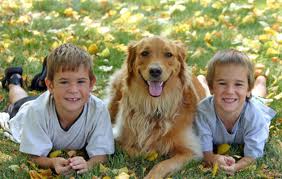 1. Pets help children develop, easier to adapt and find new friends
1. Pets help children develop, easier to adapt and find new friends
This dog, cat, rat or a parrot – this is the dream of all children. They appreciate the contact with animals. Your pet becomes a child is not only a source of warmth, affection and companion in games, and has a strong influence on the child. For example, the relationship between the child and the dog are of great pedagogical value. If a child wants to have a dog, which means that it is developing harmoniously. In society, the dog learns to be a child organized and be with others. Scientists have proved that animals can help children develop faster, easier to adapt to a new team and find friends, and shared care for animals, rides and games make family friendly.
2. Pets contribute to the physical development of children
Cats and dogs stimulate the child to the outdoor games, and develop coordination. Playing with the dog at the ball, the child involved in an interesting mobile game. In humans, contact with animals, decreased heart rate, blood pressure, heart rate slows, muscles relax, improves digestion. Life expectancy increases to 15 years. Studies show the value pets and recommend them as a medicine.
3. Pets – the best psychologists and assistants
Animals for the children – this is the best psychologists and assistant in matters of social adaptation. Sometimes an animal becomes a “link” between a shy child and his potential friends in the yard. The dog makes a contribution to the establishment of the child’s contact with the surrounding joint. A walking the dog can unite even the most taciturn and problem children. After all, what you heard the dog, increases self-esteem, which may further favorably affect the communication with the outside world. We all know that communication with the animal relieves stress and builds relationships within the family. Communication with the pet can push a child to explore the world and nature.
And a dog can teach a child to read: Here is an example: an 8-year-old boy, who could read only 45 words per minute, per month doubled the speed of reading through rate. Dog Left Behind student visited the school every week and patiently, curled up, lying on the lap of the boy while he was reading aloud. No one corrected the child is not interrupted and did not comment. In such a nice company hated reading before turning into a real pleasure. The calming effect of contact with domestic animals has long been known. Teachers say that children with a friendly four-legged listener changing right before our eyes: disappear fear, anxiety and uncertainty. Hence the excellent results.
4. Pets bring up a sense of responsibility
Pet teaches children responsibility for themselves and those close to him creatures. Doctors, psychologists and educators recommend a child a pet as a friend, who gives him not only to their proximity, but also the recognition and communication, and understanding of responsibility for themselves and those close to him creatures. The child will understand that the four-legged friend is not a teddy bear, it must be fed regularly, look and walk. These skills will help a child into adulthood, he learns to control himself and take responsibility for their actions. At different ages the degree of responsibility for the child in the animal should be varied. In 3 years the child can help fill food, pet him, together with you to walk it. In 7-9 years a child can begin to walk the dog yourself, and C13-ty years to become the master and bear responsibility for a pet.
5. The communicative aspect of. Pet – a super-topic to discuss with friends. Your child is interested in cats, dogs or other animals? Let him read the special literature, go with him on the show and keep his endeavors and aspirations. After contact with animals can become his hobby, which will create around the child the appropriate circle of friends and acquaintances.
Animals in the House
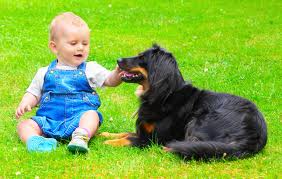 People of different professions and ages much of his free time paid breeding pets. One is a hobby brings joy of communion with nature, others see his team of friends who love to pay to them a touching affection. In most families there are animals in the house at the request of children for whom particularly high cognitive and educational importance of communication with animals. Caring for fish, birds and small animals instills industriousness, punctuality, creative skills, and respect for all living things.
People of different professions and ages much of his free time paid breeding pets. One is a hobby brings joy of communion with nature, others see his team of friends who love to pay to them a touching affection. In most families there are animals in the house at the request of children for whom particularly high cognitive and educational importance of communication with animals. Caring for fish, birds and small animals instills industriousness, punctuality, creative skills, and respect for all living things.
Setting the stage for the animals in the house, the family takes up a lot of concern that require some expenditure of funds, time and effort. Requires some skill, patience, discipline and knowledge of biological features of the animal. Of the more than half a million different species of animals in the home may well exist and be safe for humans, less than 1%. Sometimes people are trying to help those in need wild animals, take them home, so that in some time to release them back to freedom is stronger and healthier. But such altruism can result in disaster – tamed young animals, as adults, can no longer live independently and die. In this case it is better to leave the pet at home or transfer to the pet store, a school of living area, a station of young naturalists.
At present, opportunities for breeding in the home increased significantly: introduced new types of pets, in most major cities of the specialized pet shops are open, amateur associations are created, published a lot of literature.
Among domestic animals the most popular and widespread are exotic fish and other inhabitants of the aquarium. Aquarium – is not only container, a vessel for the content of aquatic organisms, and the specific biological system capable of self-regulation. Is rectangular, cylindrical, round, nodular with truncated apex, etc. Buy an aquarium, as well as his pets in pet stores can. To create a normal environment you need to create at the bottom of the tank bottom (sand, gravel, pebbles, shells), dilute aquatic plants and algae (water sprouts, , kobomba, Ricci uviranda and others), to acquire or produce their own devices for additional light and oxygen saturation of water. The aquarium can live as inhabitants of the local rivers and lakes (bitterling, eel, rudd, tench, gudgeon) as well as various types of exotic fish (Chinese, and calico telescope, the comet, celestial eye, a common goldfish and many others). Buying fish, you should consult the compatibility of different species and their feeding. It is best to refer to the literature.
More and more amateurs home terrarium – space for amphibians and reptiles content, as well as invertebrates and small mammals. However, keeping animals in terrariums little studied and is poorly lit in a special and methodological literature. First of all, must be carefully insulated enclosure to prevent the possibility of leaving his animals and the creation of a specific microclimate: a certain temperature, humidity, etc., Terrarium, usually manufactured without cracks of thick metal wire and a wall of glass (for observation). It can include toads, frogs, newts, snakes, turtles and lizards.
Fun activity is to breed the birds. When deciding to purchase feathered friends, you need to find out if someone is suffering from allergic diseases of family members, as the presence of birds in the house sometimes contributes to their aggravation. Do not rush to buy birds at random people, but before examining the requirements of feeding and caring for feathered refer to the pet store or a section of the amateur poultry. At home, the birds are kept in cages, aviaries or cages. Of the herbivorous birds can live in captivity sparrow grosbeak, finch, linnet, bunting, waxwing, bird, bullfinch, siskin, goldfinch, from insectivorous – lark, robin, common nightingale, singing thrush, nuthatch, starling, wagtail other. The most common is domestic content of exotic birds, especially parrots. They are all herbivorous, and many of them well to imitate human speech and are long-lived (live 50 – 80 years). Among poultry in the territory of Russia, the most common budgerigar, finch rack, parrot, gray parrot, pink cockatoos, and others.
When breeding wild or domestic mammals, in addition to the conditions and feeding, it is necessary to consider a number of ethical and sometimes legal issues. All mammals have well-developed psychic, teachable, trainable, responsive to affection and pain. In this regard, human relationships with them are governed by a number of legal acts: the rules of detention, transportation, quarantine, the decrees of the responsibility for cruelty to animals, etc. But there are unwritten laws of kindness and humanity. Therefore, to decide on the content of the mammals in the house should be, considering its capabilities and features of the animal.
From wild animals at home can live successfully protein, hedgehog, loir, hamster (Syrian or Central Asian).
Of the 300 breeds of dogs in the home would be best to include decorative. This variety of poodles, terriers, as well as Western and Oriental decorative dog (Maltese lap dog, or french, dwarf Pinscher, Pug, French Bulldog, Japanese Chin, Pekingese, and others).The plant in the house dog of any breed, it must be remembered that it is not a toy, but above all else and demands appropriate attention. Dog – the most loyal, selfless, forgiving, and understanding to each lot. Quite a few pleasant minutes delivers the contents of the house and different types of cats. They, like dogs, are the most common domestic mammals.
Any pets in the house – is not only worries and troubles, but above all it is an immeasurable joy of living creatures, with a part of nature.
Leukemia Virus in Cats.
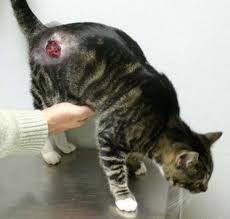 Feline Leukemia Virus (WFC, FeLV, or from the English. Feline leukemia virus) – this is a well-known killer. FeLV weakens the immune system and also has a direct impact on the development of cancer in infected cats. This disease is considered the most dangerous infection in cats, resulting in death.
Feline Leukemia Virus (WFC, FeLV, or from the English. Feline leukemia virus) – this is a well-known killer. FeLV weakens the immune system and also has a direct impact on the development of cancer in infected cats. This disease is considered the most dangerous infection in cats, resulting in death.
Although there is a vaccine against this deadly disease, they do not always give a positive result. As in the case of FIV, the best way to protect your cat from leukemia – to do the appropriate tests and to protect it from infected animals. Ideally, this means to keep her indoors only, one or the other, also non-infected cats.
Do tests to all new cats or kittens before bringing them into his house, where there are other cats. (Prior to vaccinate an animal, at first he in any case, do an analysis on the FeLV.) Your cats should also make the tests again after they have been in contact with potential carriers of FeLV, especially if your cat is bitten. Symptoms vary FeLV, so sick cat should be tested for FeLV. Cats walking on the street, or those who have been in contact with potential carriers of FeLV, testing should be done annually.
Most vets do a combined analysis for FIV and FeLV, which allows to determine the presence of both of these viral diseases with one blood sampling.
FeLV – this is very serious. Do not allow yourself to succumb to self-pity and take home a cat, she is not making pre-analysis on FeLV, especially if you are already living in the house of other cats. By doing so, you may be putting at risk the lives of their pet cats. But if it did happen and you find that allowed their contact with domestic cats FeLV-infected animals, do not panic. Isolate from infected their cats and take them to tests in accordance with the instructions of a veterinarian. After a contact transmission can not occur. Sometimes it takes a long time and repeated contact. So hope for the best and avoid further contact.
But what if analysis on your cat has FeLV was positive? The first thing you must understand that being a carrier of the virus does not mean to be sick. Some, in other respects healthy cats with a positive response to FeLV, live for months or even years without any symptoms of the disease. If an infected cat is the only thing your pet, the following guidelines. First, do not let her out, she was unable to infect other cats, as well as pick up any infections from them. Second, spend all the necessary preventive measures, the cat is not sick with something else, and collaborate with your veterinarian to diagnose and cure time associated with any FeLV disease that can develop in cats.
Most often the disease occurs in the form of lymphosarcoma, in particular the thymus. At the same time by progressive atrophy of the thymus and increases immunosuppression, neutropenia is detected. Sometimes the disease is in the form of myeloid leukemia. Sick cats are particularly susceptible to the virus to others, as well as to bacterial and fungal infections.
Symptoms. Cat exhausted, say fever, anorexia, lethargy, pallor of mucous membranes, glossitis, stomatitis, frequent breast cancer, glomerulonephritis, skin disease (demodicosis, sarcoptic mange), secondary infection. Signs of immune deficiency anemia, decreased hematocrit, atrophy of the thymus, and lymph nodes.
There are several options of the disease:
approximately 30% of the body produces antibodies, and the animal overcomes the viral infection;
40% of asymptomatic carriage is possible FeLV – these cats are the most dangerous source of infection of other cats, but eventually most of them due to the progressive destruction of immune system is developing one of the diseases peculiar to leukemia virus;
30% – a viral infection leads to severe neoplastic diseases of the lymphoid organs (lymphoma, lymphosarcoma).
In the diagnosis of particular importance is the identification of serum viral antigen p27 by using solid-phase enzyme immunoassay method (ELISA) and immunofluorescence analysis. According to recent data, a crucial role in determining the outcome of FeLV-infection in vaccinated cats or animals recovering from illness, acquired in a natural way to play a FeLV-specific cytotoxic T lymphocytes.
In contrast to FIV, FeLV virus can be defeated by the immune system of many cats. It is therefore important in two to three months after receiving (and confirmation) of a positive analysis for FeLV do retested.
Conjunctivitis in Birds.
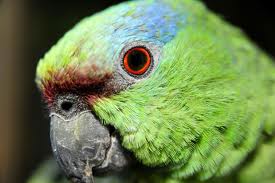 Conjunctivitis – an inflammation of the conjunctiva – a transparent mucous membrane connecting the eye that covers the rear surface of the eyelids and front of the eye to the cornea.
Conjunctivitis – an inflammation of the conjunctiva – a transparent mucous membrane connecting the eye that covers the rear surface of the eyelids and front of the eye to the cornea.
The most frequent causes of disease – irritation of the eyes with smoke, corrosive gases, as well as – dust and other foreign bodies in the eye. It is known that small birds love to rub his head on the perch, especially after bathing. If the perch is dirty, they can clog the eye. On the tits, which are more likely to rub his head on the perch, why they occur frequently and conjunctivitis, in the past bird lovers say that they are overwritten by the eye.
In canaries and other birds conjunctivitis may develop after prolonged feeding of cannabis. In this case, along with eye disease occurs and intestinal disorders. Inflammation of the conjunctiva in birds is related to indoor common, especially during the cold season, with cooling, if the cell is close to the vents or the bird is on the draft.
Connecting the eye mucous membrane contact with air and the environment. Therefore, in the conjunctive bags are always a variety of microorganisms. In clinically healthy parrots, for example, is dominated by staphylococci and other gram-positive bacteria. By reducing the body’s protective properties of these and other microbes can cause inflammation of the conjunctiva. It develops and diseases of internal organs, beriberi, and – in infectious diseases.
Symptoms. In acute conjunctivitis, mucous membrane reddens and swells, develops photophobia. Therefore, the birds keep your eyes closed or half closed. Discharge from the eye slit first liquid, and later – mucous or thick, opaque and purulent. These secretions accumulate in the inner corner of the eye in the form of clumps or filaments, glue eyelids.
Treatment. His start to eliminate the cause of the disease. Conjunctivitis, which developed because of the cold go away if you put a cell to another place and the bird will stay warm. In order not to happen, “mashing” the eye, you need to constantly monitor the purity of perches. In the event of illness due to improper feeding should begin to give the bird food, which meets the needs of the species.
The eyes of birds washed with fresh urine, the holy water (water with silver).
Diseases caused by adverse temperature conditions.
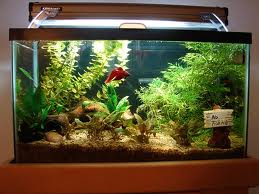 For too long exposure to cold on the body heat loss compensation is broken. In fish, both cold-blooded animals with falling ambient temperature decreases and body temperature. At the same time inhibited the function of the midbrain (cold anesthesia), and then suppressed by the hypothalamus and other centers of the central nervous system, blood pressure falls, breathing movements gill covers are rare. There is hypoglycemia, ie, decreases the amount of sugar in the blood. The central nervous system is particularly sensitive to the lack of sugar, as it has no glycogen. During prolonged hypoglycemia in nerve cells, irreversible changes. With a deep and prolonged hypothermia decreases the intensity and nature of the changes of metabolism – manifested, for example, anaerobic glycolysis, which goes to the autolysis and death comes first individual cells, and then the whole body.
For too long exposure to cold on the body heat loss compensation is broken. In fish, both cold-blooded animals with falling ambient temperature decreases and body temperature. At the same time inhibited the function of the midbrain (cold anesthesia), and then suppressed by the hypothalamus and other centers of the central nervous system, blood pressure falls, breathing movements gill covers are rare. There is hypoglycemia, ie, decreases the amount of sugar in the blood. The central nervous system is particularly sensitive to the lack of sugar, as it has no glycogen. During prolonged hypoglycemia in nerve cells, irreversible changes. With a deep and prolonged hypothermia decreases the intensity and nature of the changes of metabolism – manifested, for example, anaerobic glycolysis, which goes to the autolysis and death comes first individual cells, and then the whole body.
Resistance to the cooling depends on the state (the total resistance, fatness, age, etc.).The main cause of death of the organism from prolonged hypothermia is considered to tissue hypoxia and irreversible changes in the nervous system. Fish can live for a long time without food, but can not tolerate oxygen deprivation, even for a short period (from several minutes to several hours). In some cases, even in nature there are cases of mass death of fish with a sharp and significant reduction in water temperature (for a day or two), and the reason it is not the freezing of tissue fluid and the cooling of the protoplasm, a violation of the reactivity of the protein, leading to a profound disturbance of metabolism.
Gradual changes in temperature are rarely a threat to the health and lives of fish, while the sharp fluctuations can cause severe stress, resulting in significantly reduced fish resistance to disease. Temperature shock syndrome is well known, and should be avoided. Translate fish from one setting to another should be gradual, so that the temperature difference does not exceed 3-5 ° C.
Temperature not only affects the functioning of the body of fish, but also affects the occurrence of disease may contribute to the development of parasites. It is known that some infectious diseases of fish occur in the relatively cold water (10-12 ° C), the other most urgent occur at higher temperatures (20-25 ° C) – here are aeromonosis (rubella), inflammation of the swim bladder other. At low water temperatures the fish are suspended or slowed physiological functions of the body, breaks down the nervous system, respiration, circulation, and the formation of blood clots inside the blood vessels in and out, damaged gill apparatus.
Too high water temperature also causes disruption of the body of fish. Thus, even for short periods of high temperature “fired” gill lobes, and the skin appears whitish intense mucosal plaque. Gill petals fish become anemic, covered with slime, there is a rupture of the capillaries, there is bleeding. After some time, is necrotic decay and complete destruction of the gill filaments. On the gills of the affected areas settled saprophytic fungi and bacteria develops the disease process, and there is a fish kill.
Exposure to high temperatures in the presence of other unfavorable factors (especially the accumulation of water in the tank of a large amount of organic matter, high content of ammonia, etc.) causes an outbreak branhiomikoza. At high water temperatures dramatically exacerbated during aeromonosis (rubella) and swim bladder inflammation, accompanied by mass mortality of fish. In addition, depending on the temperature of the water appear a number of pathogens associated diseases. During the above-mentioned infectious diseases is complicated by the massive development of Ichthyophthirius, Dactylogyrus, and other agents of invasive disease. Some of these parasites are cold-loving, others – heat-loving. So, Costia necatris preferred temperature 10-22 ° C, Ichthyophthirius – 20-26 ° C, Dactylogyrus vestator – 24-28 ° C. At these temperatures, there are outbreaks of epizootic diseases of the: kostioza, ihtioftirioza, dactylogyrosis. All these temperature zones are safe, secure oxygen, carbon dioxide poor water with neutral reaction (pH = 7,0-7,1).
With the deterioration of environmental conditions decreasing the stability of the fish as too high and to very low temperatures. It should also be remembered that with increase in temperature increases the toxicity to fish and other aquatic organisms most chemicals.
From the above it follows that the temperature of water is an essential life-sustaining factor in the aquarium, which is the correct use can avoid a lot of trouble for their pets.
Does Your Cat Healthy?
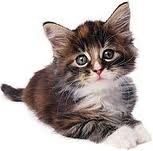 Health of the cats, their growth and development, and hence the ability to please their owners affection, cheerfulness depends on us. In city apartments, cats have sometimes sweet, and if the summer village, the cottage, the longing for freedom can be manifested in a small space is enough room keenly felt: will be irritability, nervousness, and after that await her various ailments.
Health of the cats, their growth and development, and hence the ability to please their owners affection, cheerfulness depends on us. In city apartments, cats have sometimes sweet, and if the summer village, the cottage, the longing for freedom can be manifested in a small space is enough room keenly felt: will be irritability, nervousness, and after that await her various ailments.
The conditions of housing, feeding, depends a great deal of attention. The owners need to know the physiology. animals – in fact a violation of fundamental rules of treatment (iznezhivanie excessive, indiscriminate feeding, and so becomes the cause of many internal hosts non-communicable inattention can lead to poisoning by various chemicals, which are many. Care should be taken to ensure that these substances were stored in inaccessible places for pets , cats have a value, and the purity of the air density is placed in the animal itself (it should be to wean the cat stain soft furnishings and bed and climb on the table in the closet, etc.)
How could still determine that the cat is unwell. After all, if a person feels unwell or pain, he complains about his condition, and hasten to the doctor. A cat? And they complain, though, unfortunately, we do not always understand them, and therefore appeal to the vet too late. How to recognize the disease, have a cat first aid?
Diagnose and treat our four-legged is not easy, but it is quite possible. Hosts cats need to know how and when to give them first aid, in which cases should be isolated from other infected animals like him, and, possibly, from the people.
A healthy cat mobile, cheerful, calm. She has a good appetite, even breathing, wet and cold nose (nasal mirror), normal body temperature (38-39 ° C) and heart rate (110-130 beats per minute), the acts of defecation and urination are regular.
Sick cats become lethargic, irritable, did not respond to the name, hide in the nooks, prefer to lie down. The nose is dry and often hot, watery eyes, appetite is reduced or absent, dull coat, you may experience coughing, wheezing, diarrhea or constipation, vomiting, increased thirst. Depending on the nature of the disease there are significant variations of the above symptoms.
It has long been observed that cats themselves licking their wounds. It is not surprising, since in their saliva has a special ingredient – lysozyme, under the action of which the wound is cleaned of harmful microbes and faster healing. For digestive disorders, wounds in the mouth and other diseases while walking cats seek out and eat them known only to the plants. Do not let this – the ability to self-medicate cats fixed genetically. All veterinary drugs, as well as other chemicals, keep out of reach of pets place.
Experts determine the health of the animal in their general appearance, and in addition, by examining the ears, eyes, coat, etc. In order to clarify the diagnosis of the important role played by laboratory studies (helminthological, bacteriological, etc.).
The examination and provision of veterinary care must first make a proper fixation of the animal – the so-called consolidation of the animal’s body or parts of it in a certain position – that ensure the safety of both cats and humans. Usually keeps the cat owner. Use different ways to fix that so that there was no adverse consequences (injury, etc.).
Known methods of using drugs:
inside – through the mouth provide a variety of powders, potions, pills, boluses, capsules, pills, solutions and emulsions;
intramuscularly administered to cats antibiotic solution, procaine, magnesium sulfate;
subcutaneously injected antibiotics and all solutions intended for injection, as well as vaccines and serums;
intravenous administration of drugs to cats is very difficult, so this method is used in extreme cases;
inhalation and physical therapy treatments;
external method using various ointments, compresses, solutions, etc.
Some medicines can make sick animals their owners. To do this, the cat must be recorded, and then using tweezers, wooden spoon or a hand put on the root of the tongue the right medicine.
Hot compress do so, a tissue soaked in drug substance is applied to the affected area, on top of parchment paper and put a cotton compress, and then tape up.
Choice and Design Aquarium
CHOICE AQUARIUM
Fishbowl may seem attractive, but it is not very practical: it is difficult to clean the walls, it is more difficult to cover, in addition, curved glass distorts the picture of the underwater world. Preferably purchase a rectangular tank. The best ratio of length, width and height – 2:1:1. A small aquarium will require more attention, and the choice of fish and plants for him less. The larger the aquarium, the more stable it biological balance. The optimum solution for homes are aquariums from 50 to 150 liters.
Naturally, not all have the opportunity to acquire a large aquarium. But this does not mean that you have to completely give up the idea to have an aquarium. In this case you need to consider technical equipment as well as the area is limited and must leave enough room for fish and plants. The choice must be stopped at the aquarium-cast, because the seams, frames only accentuate a small volume. Of great importance is the thermal regime. The aquarium should be removed from all heat sources (batteries, electric fireplaces, etc.), and protected from direct sunlight. With regard to registration of the aquarium, it can be divided into two areas: design, using vegetation (live or artificial) and without it. For illumination of small aquariums is advisable to use table lamps (fluorescent or incandescent).
DESIGN AQUARIUM
In the tanks with a capacity of 20-30 liters more as a decoration you can use large snags or group of stones. As the soil is taken fine gravel (4-5 mm grain size), coarse sand. The thickness of the soil is usually in a small aquarium, 2-3 cm
When making a basic principle of the aquarium – a departure from symmetry. As for the selection of fish and plants, the small vessels is limited. You can recommend a low Echinodorus, Cryptocoryne, Anubias, from the stem – alternateru, rotalu, Bacopa, Ludwig, Vallisneria. You can land a Thai fern, Java moss, floating plants are quite appropriate – Ricci, Salvinia, duckweed. The main thing – consider planting so that the aquarium does not then looked overgrown. Group planting in a small tank is impractical. In a large aquarium tight fit alternates with free space, and in a small vessel, dense thickets create the impression of neglect. In addition, in the thickets of the lost fish can be lost, and before it, and will draw notice, may release waste products. Experienced aquarists are advised to proceed on the assumption that 4-5 liters of water a plant has one high and 2-3 low. When planting the largest plants are placed in such a way as to mask the filter and heater. Low plants are placed around the highest. If the tank is not supposed to plant the plants, then use a decorative element (grotto, a snag). As a rule, is only one.

You must be logged in to post a comment.